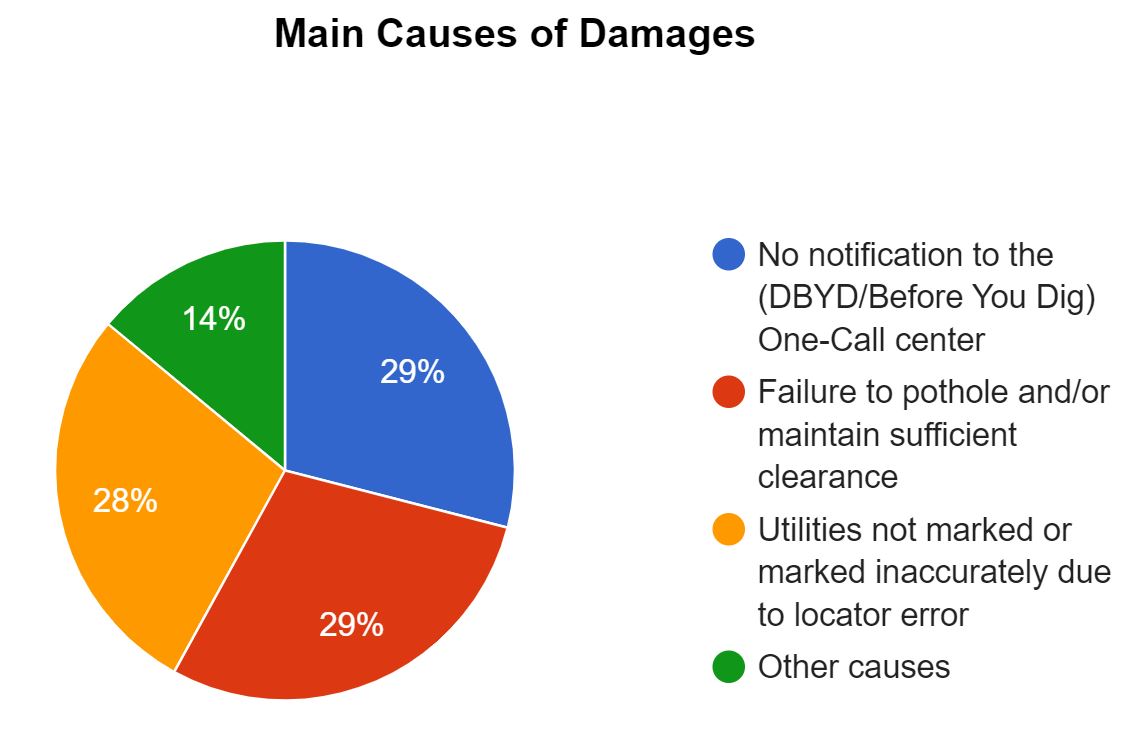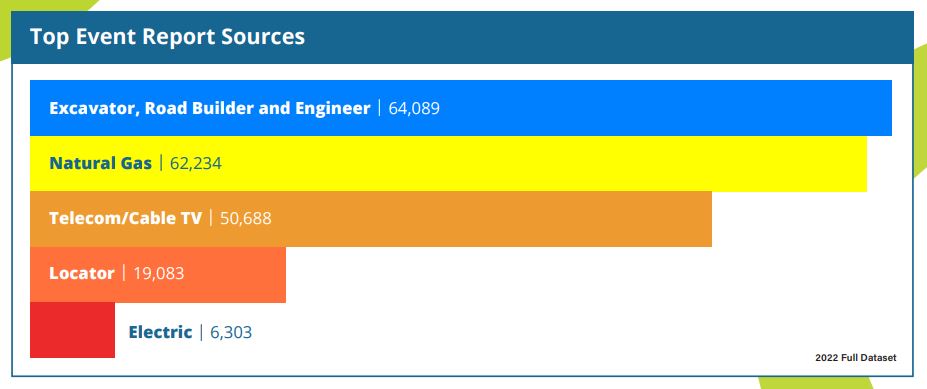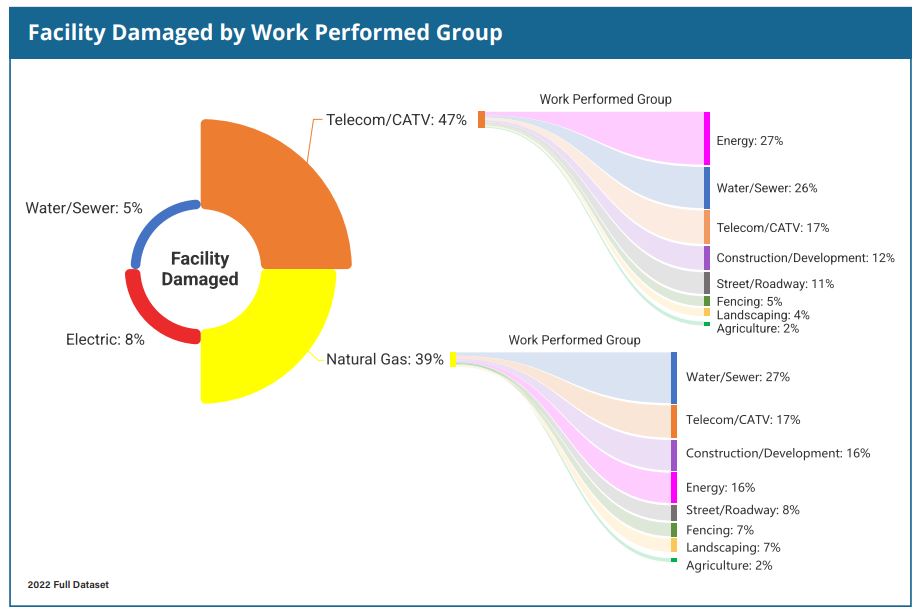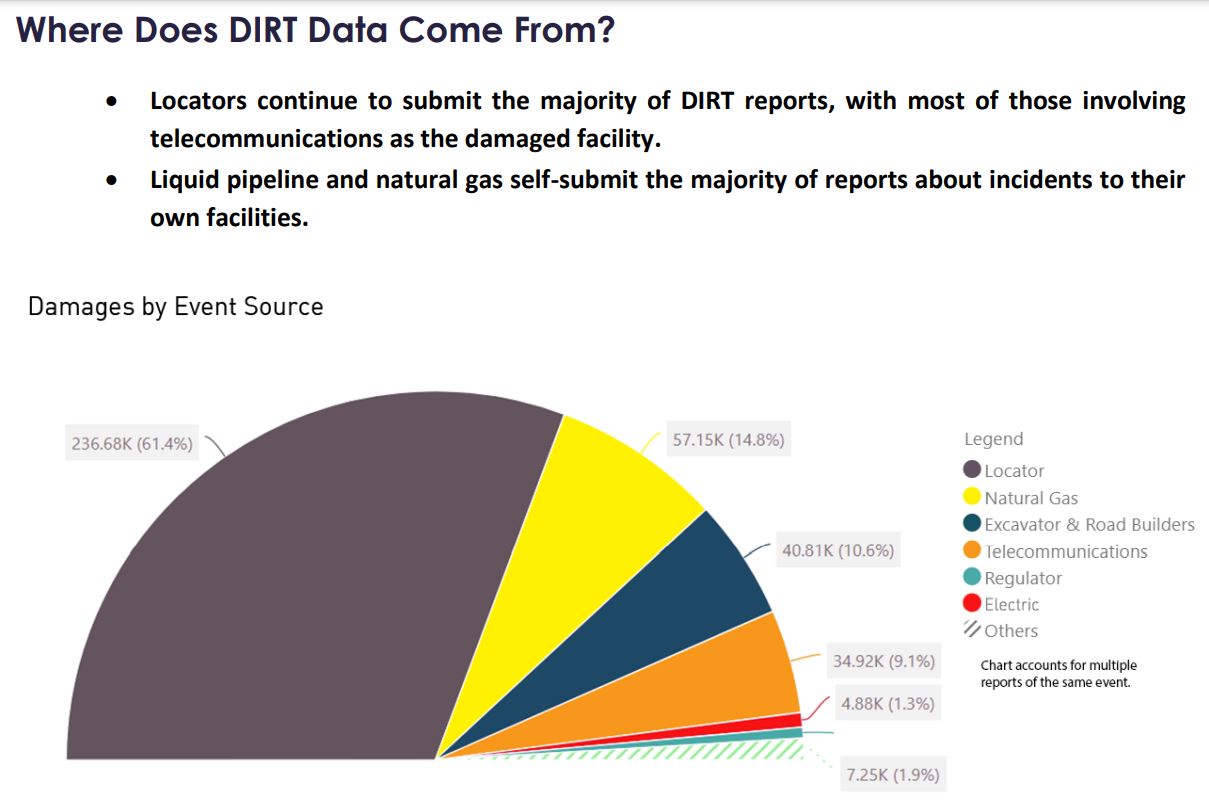 A Global Perspective on Utility Damage and Injury Prevention Statistics.
A Global Perspective on Utility Damage and Injury Prevention Statistics.
The importance of managing underground utilities safely cannot be over addressed, with countries around the world grappling with the consequences of damages and injuries from utility strikes.
These incidents not only pose significant injury risks but also incur substantial damages. Here are some overview statistics from dial before you dig one-call service.

-No notification to the (DBYD/Before You Dig) One-Call center. (29%)
-Failure to pothole 
-Utilities not marked or marked inaccurately due to locator error. (28%)






We cover statistics and key takeaways from United States, United Kingdom, Canada, Australia, and New Zealand.
 Warning: Causes of Utility Damage
Warning: Causes of Utility Damage
Most of the damages, totaling 86%, can be attributed to the following critical causes:
- No notification to the (DBYD/Before You Dig) One-Call center. (29%)
- Failure to pothole
and/or maintain sufficient clearance. (29%)
- Utilities not marked or marked inaccurately due to locator error. (28%)
 United States of America DIRT Reports
United States of America DIRT Reports
The critical issues and challenges faced by the industry in th US, emphasizing the need for significant improvements in safety and efficiency.
With a focus on reducing damages by 50% within the next five years, this calls for unprecedented collaboration across the sector, innovative technologies, and a rigorous examination of root causes.
This analysis not only highlights the financial and societal costs associated with such damages but also underscores the environmental implications and the urgent need for action.
 Key Takeaway Facts, Figures and Statistics.
Key Takeaway Facts, Figures and Statistics.
- The goal is to reduce underground utility damages by 50% within five years.
- Annual societal costs from damages amount to $30 billion.
- Utility strikes lead to over 2,000 injuries and 400 deaths each year.
Analysis and Recommendations from DIRT Damage Information Reporting Tool 2022.
Here's a list of key takeaways from the 2022 DIRT Report:






These points summarize the report's findings and recommendations to improve safety and efficiency in handling underground utilities.
The 2020 DIRT report by the Common Ground Alliance highlights critical insights into damages to underground infrastructure, with significant impacts on societal costs, safety, and the environment. 




 United Kingdom UK DIRT Reports
United Kingdom UK DIRT Reports
This summary aims to shed light on the scale of the problem, the fragmented state of underground asset information, and the urgent need for comprehensive strategies to mitigate these risks, safeguarding both public safety and economic well-being.
 Key Takeaway Facts, Figures and Statistics.
Key Takeaway Facts, Figures and Statistics.
- NUAR Cost-savings estimated at £347 million per year over 10 years.
- 4 million holes and excavations are dug across the UK each day.
- 60,000 utility strikes each year.
- £2.4 billion in costs due to utility strikes per year.
- NUAR's cost-saving is estimated at £347 million yearly over a decade.
- There are 60,000 utility strikes each year, costing £2.4 billion.
- Across key suppliers to Highways England, there can be as many as one utility strike per day on average. The most significant incidents have tragically resulted in fatalities and life changing injuries.
“Approximately four million holes and excavations are dug across the UK. The data relating to underground assets is currently held in lots of different locations, it's very fragmented, and varies significantly in quality and format.
“Every time a hole is dug it carries risk in terms of causing damage or injury and there are 60,000 strikes each year. The estimated cost of those utility strikes is just short of £2.5 billion pounds per year to the UK economy.
USAG Utility Strike Report 2020
The report summarizes the key findings of 2070 utility strikes across the UK during 2020 based on responses from 43 USAG Members (including 10 with no strikes reported).
 Canada DIRT Reports
Canada DIRT Reports
The reporting of damages and injuries cased by excavation practices in Canada give great context to see emerging patterns in the industry. Statistics are from Canadas Common Ground Alliance and Reports.
 Key Takeaway Facts, Figures and Statistics.
Key Takeaway Facts, Figures and Statistics.
- 1 in 4 damages due to not making a locate request.
- Nearly 1 in 5 damages involve hazardous/life
threatening facilities. - Societal cost of damage to buried assets is estimated to be
over 1.2 Billion dollars. - More than 48 damages occurred per workday.
- The total number of damages Canada-wide is 11,949,
which is a drop of 0.8% from 12,041 in 2018. - Natural gas (46%) and telecommunication (39%) facilities were
affected in 85% of damages. - Hoe/trencher was the most common equipment type
used in damages (60%). Equipment type was omitted in
18% of reported damages. - Work on water and sewer systems accounted for
24% of damages. - The most common known root cause of damages was
excavation issue (39%). - Note that damages are reported to DIRT on a voluntary
basis and thus do not reflect the total number of damages
that take place in a year in Canadian provinces.
 Australia IDIG Reports
Australia IDIG Reports
The raising trends of costs of utility strikes in Australia is concerning and need to be addressed with actions to spread awareness and provide context to cost benefit of utility locators for any construction project.
 Key Takeaway Facts, Figures and Statistics.
Key Takeaway Facts, Figures and Statistics.
- Electrical hazards and telecommunications strikes are prominent, with 20,000 network strikes reported yearly.
- Reported incidents mainly stem from mechanical excavation, highlighting the need for better risk management strategies.
- Australian pipeline failure rates are 10–20% of the international mean.
Here's a summary list of facts, figures and statistics in Australia:

Telecommunications Strikes: 20,000 network strikes reported yearly, with $20 million in damages.







This encapsulation highlights the significant risks and financial impacts of damaging underground utilities.
The New Zealand public funds a in direct costs of utility strikes to the tune of $2.5 Billion every year.
 Key Takeaway Facts, Figures and Statistics.
Key Takeaway Facts, Figures and Statistics.
- Utility strikes cost New Zealand $89 million in direct costs annually and up to $2.5 billion in indirect costs, equating to 1.17% of GDP.
- Reveal, a New Zealand-based company, is pioneering in providing technology-based solutions to mitigate these risks through enhanced data visualization and a comprehensive digital platform.
Here's a list based on the problems identified by Reveal company approach to its underground utility risks:







Conclusion 
Each country's approach to handling underground utilities reveals a common theme. The critical need for enhanced visibility, stringent policies, and innovative technologies to mitigate risks.
As we move towards a more connected and infrastructurally complex future, the lessons and strategies from these nations will undoubtedly play a pivotal role in shaping global best practices in utility damage prevention.
Resource Links:
https://infrastructuremagazine.com.au/2023/09/05/looking-deeper-solving-the-problem-of-underground-utility-risk/
https://1spatial.com/news-events/2022/1spatial-and-the-national-underground-asset-register-project-nuar/
https://www.highwayssafetyhub.com/uploads/5/1/2/9/51294565/common_intent_-_utility_strike_avoidance_-_final_v1.2a.pdf
https://lsbud.co.uk/damage-prevention/
https://downloads.safedigs.co.uk/lsbud_website/pdfs/lsbud-damage-prevention-day-2023-review.pdf
https://www.utilitystrikeavoidancegroup.org/
https://www.utilitystrikeavoidancegroup.org/reports/
https://www.gov.uk/guidance/national-underground-asset-register-nuar
https://lsbud.co.uk
https://www.canadiancga.com/resources/Documents/DIRT-Reports/National%20DIRT%20report%202020%20-%20CCGA%20September%202021.pdf
https://horttrades.com/assets/1609949491.DIRT_-_2019-Eng-Final.pdf
https://utilitysafety.ca/learning-centre/damage-reporting/
https://www.canadiancga.com/resources/Documents/DIRT-Reports/2022-DIRT-English-Final.pdf
https://www.byda.com.au/wp-content/uploads/2023/07/BYDAs-forum-May-2023.pdf
https://www.sciencedirect.com/science/article/abs/pii/S092575351730588X
https://blog.iseekplant.com.au/blog/horror-statistics-queensland-construction-1
https://infrastructuremagazine.com.au/2023/09/05/looking-deeper-solving-the-problem-of-underground-utility-risk/
https://sitemap.com/articles/the-role-of-sitemap-in-enhancing-construction-safety-protocols/








 New Zealand Reports
New Zealand Reports